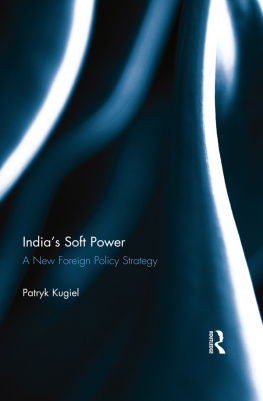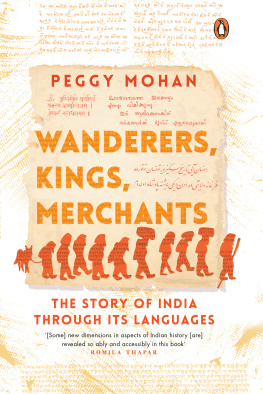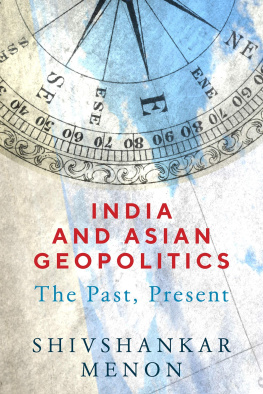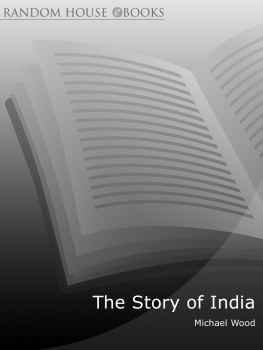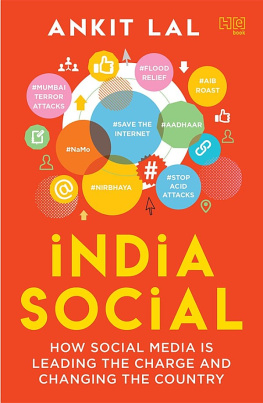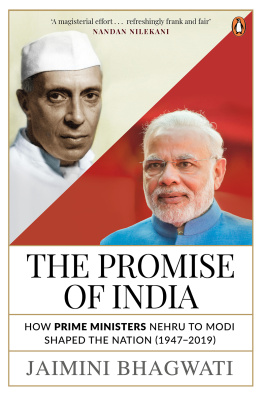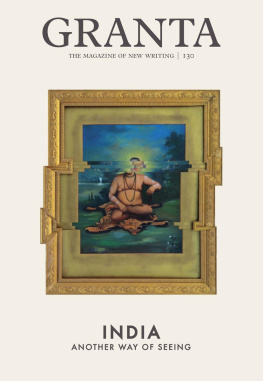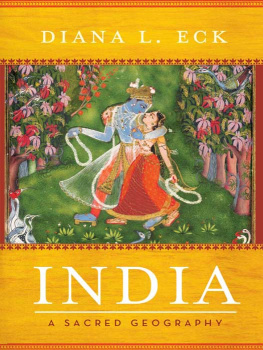THE SCEPTICAL PATRIOT
Sidin Vadukut is one of Indias most popular journalists, authors, columnists and bloggers. He is currently an editor with Mint, and is the author of the best-selling Dork series. The Sceptical Patriot is his first book of non-fiction.
Sidin lives in London with his wife and daughter. He tweets as @sidin and blogs at http://www.whatay.com.
Published by
Rupa Publications India Pvt. Ltd 2014
7/16, Ansari Road, Daryaganj New Delhi 110002
Sales centres:
Allahabad Bengaluru Chennai Hyderabad Jaipur Kathmandu Kolkata Mumbai
Copyright Sidin Vadukut 2014
All rights reserved.
No part of this publication may be reproduced, transmitted, or stored in a retrieval system, in any form or by any means, electronic, mechanical, photocopying, recording or otherwise, without the prior permission of the publisher.
First impression 2014
10 9 8 7 6 5 4 3 2 1
The moral right of the author has been asserted.
Typeset by Jojy Philip, New Delhi.
Printed at Thomson Press India Ltd, Faridabad This book is sold subject to the condition that it shall not, by way of trade or otherwise, be lent, resold, hired out, or otherwise circulated, without the publishers prior consent, in any form of binding or cover other than that in which it is published.
To
K and S
Contents
Introduction
Extensive Disclaimers
Hello. A new book! How exciting!
First of all, thank you for buying a collection of somewhat personal explorations into Indian history, by an author who has previously only written humour novels set in fictional management consulting firms. You have done a very brave thing indeed. And I am deeply grateful. I hope this book will fully reward you for your audacity.
Before you plunge into these explorations, there are two things about this book that you should know at the outset. Knowing these things may help you enjoy this book more.
First, almost everything you read in this book will eventually be proven wrong. This is the nature of most history writing, even when the writer attempts nothing more ambitious than trying to answer the question: What do you think really happened? History, in quotes, usually gets even more controversial when writers try to figure out not only what happened, but also the reasons for and implications of these happenings.
Much scholarship and punditry later, just when it looks like we have unshakeable proof to buttress some historical argument, new discoveries will come along and make everything before them meaningless. History is an enigmatic mistress who likes to keep her lovers on their toes.
As I sit on my sofa typing out these words, bookstores all around the world are being lashed by tidal waves of books on the First World War. There are now only a few months left for the centenary of that most terrible of human conflicts. And yet book after new book and documentary after new documentary still strives to answer that fundamental question: Why did the First World War happen?
A hundred years lateryears that have been spent in relentless historical research, analysis and scholarshipthere is still exuberant debate about why the Great War broke out. Who or what was responsible? British vacillation? German ambition? Russian mischief? Serbian intrigue? Austrian pomposity? Industry? Human stupidity?
If the First World War seems beyond historical consensus, what chance is there for this book, or any book, to make incontrovertible statements about millennia of brain-meltingly complex Indian history?
In my explorations for this book I have sought to tread lightly around and through controversy. The idea of this book is, admittedly, to question certain popular notions and narratives of Indian history. But I have tried to do so within the confines of established historical research. The idea is to take you on a series of short journeys into certain alleyways of Indian history without asking you to take sides on anything.
You are free to, of course.
On infrequent occasions in this book I have planted my flag on certain sides of some historical arguments. You are welcome, nay encouraged, to disagree with me on these conclusions.
But I implore to always keep in mind that the journey is paramount. Think of this book as one of those guided walking tours that tourists go on. If you wish you can constantly stop the nice man who is showing you around with your incessant questions and arguments, thereby ruining the tour for him, you and everybody else. Or you can take it all in, make a mental note of disagreements, and then revisit things later when your tour is complete.
The latter approach may help you enjoy this book better.
In any case, eventually, all our conclusions and analyses will be proven wrong anyway.
Just days before we locked in the final draft of this book, there were reports of a major new archaeological excavation in Nepal. A team of forty archaeologists led by Professor Robin Coningham of Durham University excavated a new shrine beneath the Maya Devi temple in Lumbini that potentially moves the Buddhas birthdate back by three-hundred years to the sixth century BCE.
As you might imagine, this has a significant impact on a lot of historical research. Especially when it comes to events, people, or documents that hitherto had been dated with respect to the life of Buddha. Your author also had to make urgent adjustments to one chapter to reflect this discovery.
What is to say that many thousands of such discoveries lay buried beneath our temples, monuments, homes, forests, farms and even highways? Who is to say that within weeks of this books launch a new excavation in Delhi or Sanchi or Tanjavur will render many of these chapters worthless?
This does freak me out a little bit. But that is history for you. Onwards she marches, making fools of us and our petty squabbles.
So that is the first thing you need to keep in mindthis book does not aspire to be the final word on Indian history.
The second thing you must keep in mind before reading further is that this book was almost entirely typed perched precariously on the shoulders of giants. This book is the fruit of months of poking and prodding through books and manuscripts at libraries and numerous online archives. However this effort pales in comparison to the people who work at the coalface of historydigging up things, translating manuscripts, dating events, preserving objects and piecing together historical narratives one palm leaf page at a time. It owes everything to the work of at least two centuries worth of Indologists and historians.
The chapter on the Chola expeditions, for instance, would have been impossible if not for the work of Augustus Frederic Rudolf Hoernl, Georges Coedes and hordes of other epigraphists, researchers and scholars.
The debt of gratitude to them is huge.
But along with that debt comes a certain historical narrative thread. Pioneers in any field tend to set the terms of engagement between the public and their innovations and discoveries. So while we continue to analyze and criticize the works of Darwin, Newton, Keynes or Hayek, we are still bound in some ways to the tone and syntax of these pioneers and their work. (Or to what we think is their tone and syntax.)
This is perhaps why some Keynesians still think that Hayekians live in free market utopia, while Hayekians deplore the swagger and condescension of their posh Keynesian colleagues.
Students of history are equally prone to the same bonds of tone and syntax. Amateur students even more so. So do keep in mind that my efforts in this book have primarily been those of constructing an entertaining but accurate narrative of history based on the work of others. However it is inevitable that their biases and postures will have filtered through as well.


